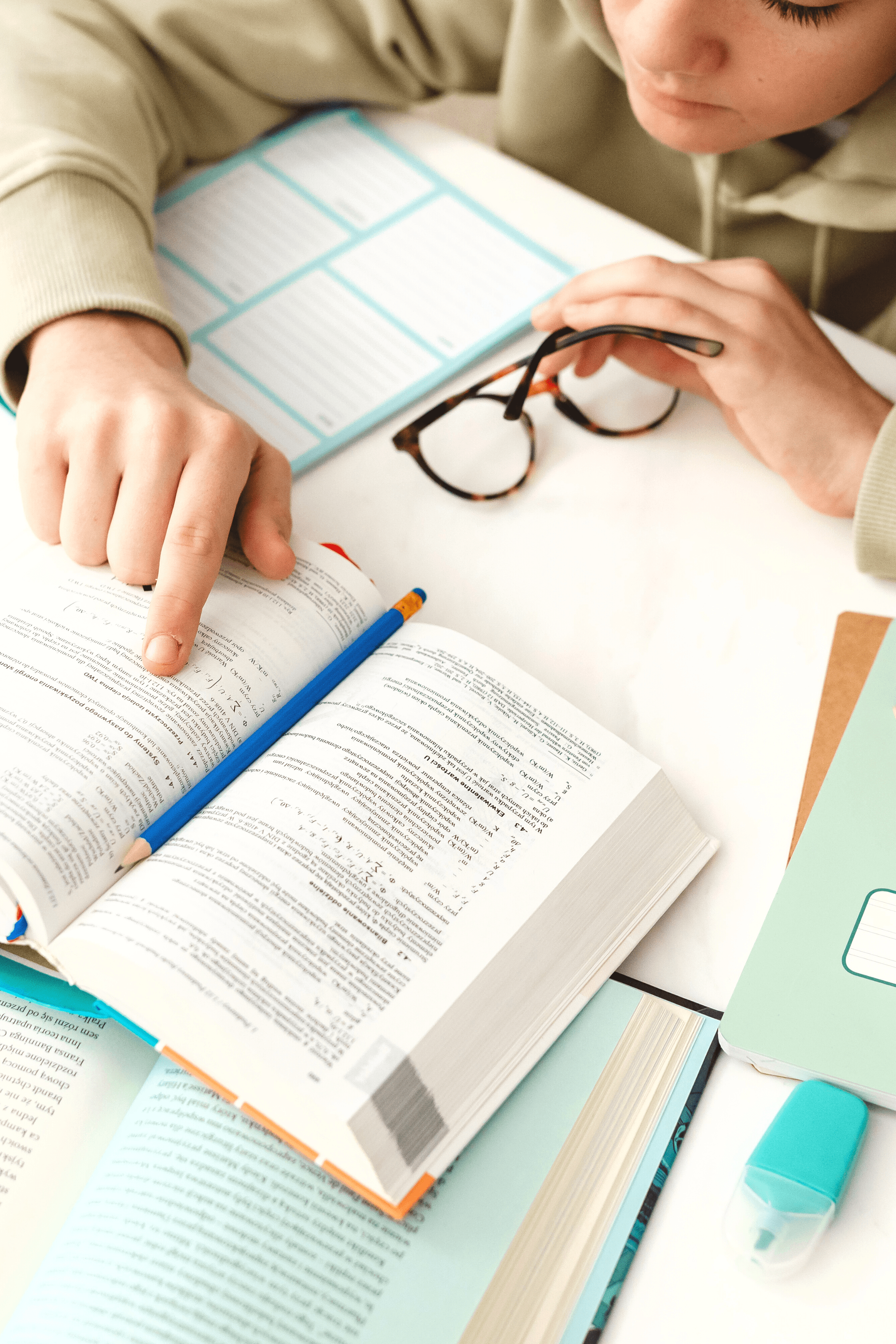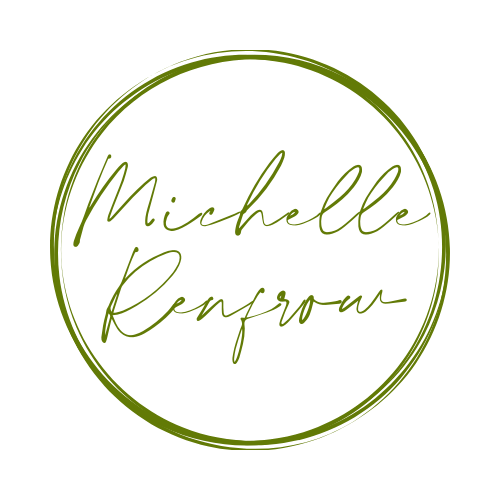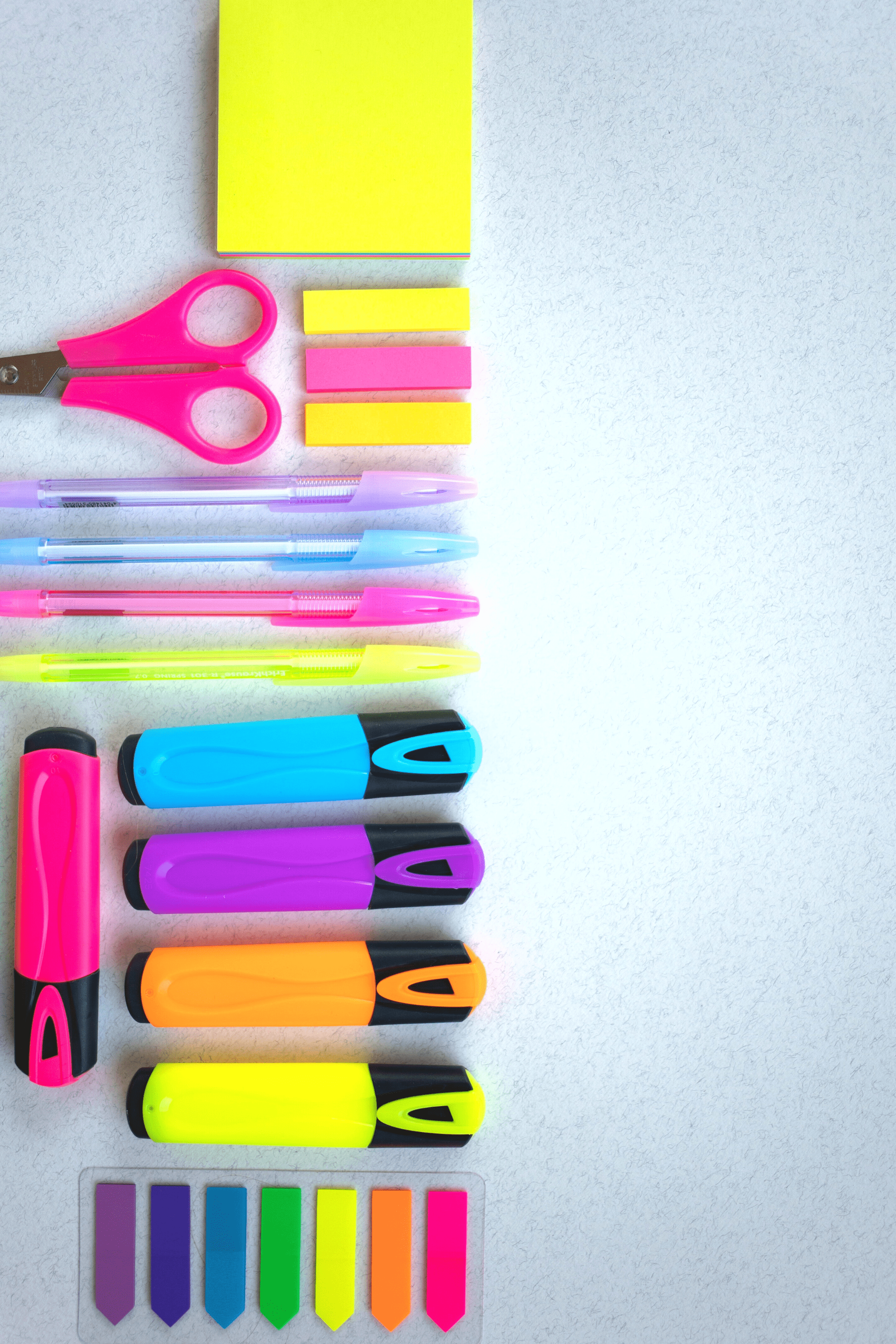I teach an executive functioning class to incoming sixth graders at my private school. One of the things we focus on is study skills; being organized and learning how to study are extremely important. I asked all the teachers in my middle school, some parents and some students what they felt we needed to teach them when they entered into sixth grade and how to actually study and organize themselves was top of the list!
Remember, this is the first year the students transfer around to different classes during the day and it is the first time they have more freedom at lunch and during their break time. Going into 6th grade, and all the higher grades after, they are assigned a lot more homework and have a more challenging curriculum put on their plate. Needless to say it’s not surprising when some of our students get a little freaked out.
Basics of the Beginning of Study Skills
First, to have good study skills you need to be a competent reader. Reading for pleasure or learning is key to functioning in this world. Reading to your child every night for 30 minutes is more valuable than anything else. Reading enhances language, encourages creativity and imagination, it fosters curiosity and engagement in our world.
Reading to your child also creates intimacy and a connection to your little learner. I like to use different voices for the characters. It’s fun! Have FUN! Get reading! Reading Rainbow is my favorite program and I have been following it since I was a kid.
One of the things that we learned is a technique called the Pomodoro method. This is a method of time management that helps you organize the work that you need to get done that day that week, for that month and break it up into manageable chunks. We use it for studying but you can also use it for work tasks as well.
Another important study skill is memorization. My favorite way to memorize is to use mnemonic devices. I could not have survived the LPC licensing exam with those little gems. All those theorists and steps for different techniques. PHEW.

Now We Get Into The Nitty Gritty!
Test taking is a study skill too. Being prepared for a test in many ways depends on your studying too. I like to try to recreate the environment a child will be testing in. A silent room in your house is not what the kid is going to experience. A regular classroom in a school has noises, Coughs, sneezes, and other bodily noises. Sometimes talking etc..
Prepare your kid for managing distractions. Help with the process of elimination problems. Believe it or not I firmly believe that playing Sudoku helped me with the multiple choice portion of my LPC exam. I learned to scrutinize the answers and rule things out. It was very helpful.
Effective note taking makes your study skill toolbox well rounded. You need to learn this technique and master it well. YOu have to find the balance of OVER taking your notes and not being able to filter out the important things and NOT writing down enough to use when you are studying. Recall can sometimes be about a trigger word or note or sentence, but if you don’t get it all down, it will be harder to study later.
For note taking you need; preview the section you are about to read. Skim it and see what it’s about. READ the headers and subtitles. They will give you clues to the content of the section. Rephrase the main concepts into sentences you can grasp. Restating something you just read in your mind allows you to make sure you are grasping the concept you just read. Read those captions too!
Which Study Skills Work for You? Find & Focus On Individual Techniques!!
Pictures are valuable and also make for a great visual cue to remember something you read. Almost 80% of the world are visual learners and do better with that image to connect with a topic they have learned. Post its, highlighters, and note cards OH MY! Which technique works for you?
I like to read and highlight what I like or need to focus more time on. I like to use different colors for different reasons. Some are things I want to remember and some are things I need more time to process. Find the one that works for you and color your world in knowledge!
I have this study skill I teach my middle schoolers called the Pomodoro method. This study skill method consists of making a list of all of the assignments that you need to do for that day and possibly that week/month. Some of my clients like to use a paper planner and they have all their notes written down. Some like to just keep a running list of what needs to get done and work things out as they go. Some are digital mavens who use their online calendar and other digital tools to keep track of their work.
Our school has all assignments on a digital platform and most request that the work be submitted digitally as well. We
also hand out paper planners for them to use during the year. Whichever is the easiest method for your students I say go with it. Personally I’m old-school. I like my paper planner; I like my colored markers, my sharpies, my highlighters and stickers of course!
Give It A Try and Remember To Stay Organized!
Let’s try this study skill. Once you’ve decided you’ve got everything that you need to do and the tasks are written down. You decide which one you’re going to start with. Get all your materials out once you’re ready and set a timer for 20 minutes. At the end of 20 minutes if you’re not done with your work, take a five minute break and when your break is over you go back to that assignment.
You do this until that assignment is finished. If you’re in the middle of one of your 20 minute study breaks/sessions you’re going to go to the next thing on your list and start on that project or assignment. If you finish one of your assignments in the first 20 minutes of your Pomodoro method then you’re going to jump straight into the second assignment and so on and so forth until you finish everything on your list. Once you’ve completed four 20 minute rotations you are then going to take a longer break for about 15 to 20 minutes.
Perhaps grab a snack or go outside and breathe some oxygen, play with your pet or do anything to take your mind off what you’ve been working on. Then jump back in and do the next round of Pomodoro sessions. It’s a little tedious in the beginning but once you get the hang of it it’s pretty simple and easy to follow. What’s important is to make sure that everything that you need to accomplish is actually written down on that list and you have all the tools you need to get going.
Staying organized. Part of having healthy study skills is having all the necessary tools you need at hand. I have a small desk set up in my house that I keep extras of everything I need. I have chargers for all my electronics already plugged in and ready to use. I have pencils and pens and a cute little organizer for all the other little office supplies goodies that I’m obsessed with. Having to go around the house looking fro all the supplies makes my ability to get started harder. And for me, the ADD queen, getting distracted is very easy and I can find myself organizing my sock drawer when I was actually headed to the kitchen for a snack. Lol.
Keep scratch paper and other things that your student needs on hand close by. Keep it stocked and ready to go. Don’t let things leave that space. I have like 5 pairs of scissors in the living room. I have hoards and hoards of pens all over the place. Yes, I also have a junk drawer, but who doesn’t? Ha ha
Anyways, Keeping a clean and open space that is well organized and fully stocked makes getting started smoother. Getting good at study skills is a necessary lifelong skill that the sooner you can master, the better off we all are. Try it and good luck!

